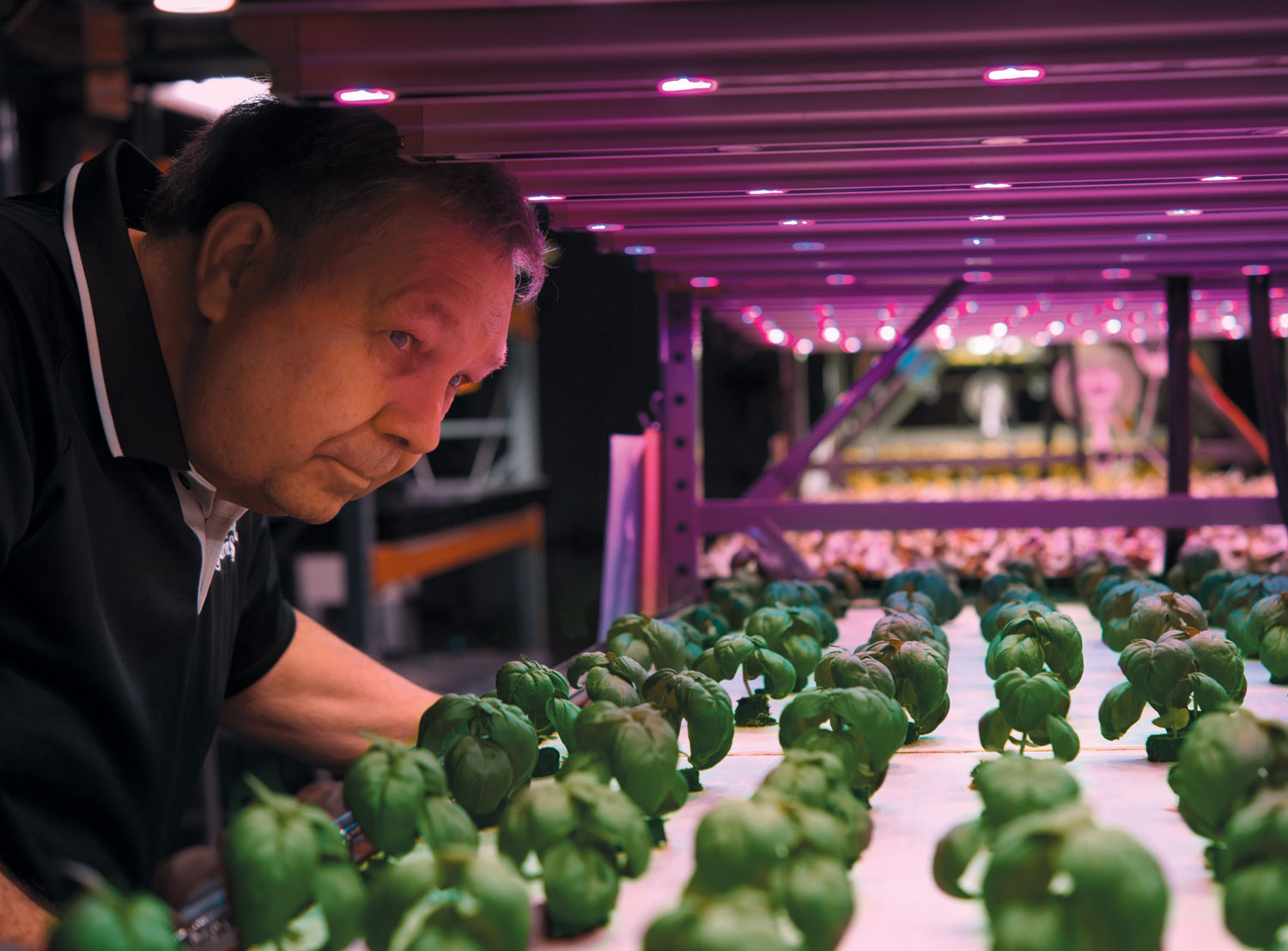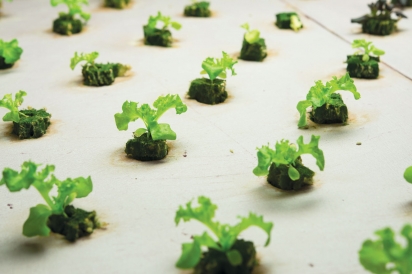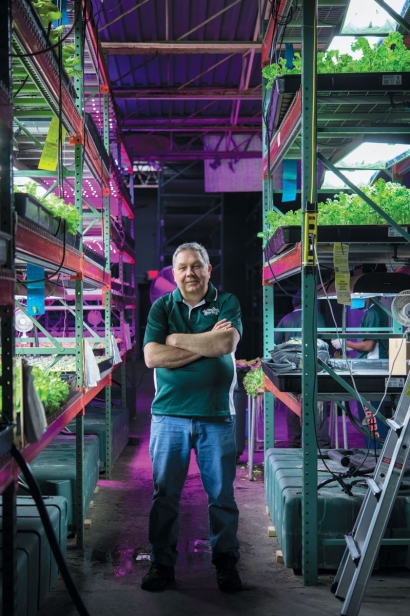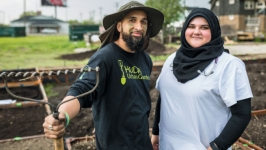Artesian Farms Blossoms in Brightmoor
From the outside, the low-slung, nondescript warehouse on Artesian Street in northwest Detroit looks like any other small industrial building in a struggling city that has lost so much of its former manufacturing might.
But inside, a sort of magic is happening. Tucked inside shelves stacked floor to ceiling, a profusion of green crops explode beneath the purple glow of grow lights. They perfume the air with the fresh scent of salad greens, basil and kale.
It’s been nothing but growth for Artesian Farms since Jeff Adams launched the indoor hydroponic operation in 2015. Contracts to sell its signature greens through major metro-area grocery retailers including Westborn Market, Busch’s, Papa Joe’s and the Detroit Whole Foods, coupled with contracts with restaurants including Gold Cash Gold in Corktown, are driving that growth forward.
For Adams—who wears multiple hats ranging from CEO to farmer to operations manager to deliveryman—it’s a constant game of keeping up with crops that are harvested 17 times per year.
“This is our Motown Mix growing here,” says Adams, pointing to a rack of trays filled with a gleaming array of red and green baby salad greens rising several inches from a special growth medium. “We’ll harvest this next week. We planted it three weeks ago. Between now and next Tuesday, this will probably grow a time again as big. Out of these three levels, we’ll get about 45 pounds of lettuce.”
The production volume generated from this 7,200-square-foot building is nothing short of astounding. Adams can achieve these numbers with hydroponics, an indoor growing method that is increasingly being adopted across the nation, as cities embrace urban agriculture and farmers look for ways to meet the rising demand for local produce. Hydroponic growing allows farms to grow high volumes of produce year-round in small spaces, using less water and nutrients than conventional agriculture. Industry statistics show that hydroponic crop growth grew by 4.5% annually between 2011 and 2016, and continued growth, owing to rising food prices and extreme weather conditions, is projected over the next five years.
Adams launched the endeavor as a social enterprise. A trip to Brazil with Kensington Church to work with street kids inspired him to do something to alleviate poverty closer to home.
“We figured if we could go 7,000 miles away and work with kids we’ll never see again, what about our own backyard?” When Adams and his wife, Dana, who is an educator, returned from that trip in 2002, they joined City Mission, an organization working to lift up residents in Brightmoor. Dana joined the staff, writing curriculum for a tutoring program.
By 2003, the Adamses decided to move from their home in Rochester Hills to Brightmoor, which suffers some of the highest levels of poverty, blight and disinvestment in the city.
“We figured if we’re going to be down here all the time volunteering, if we’re going to serve in the neighborhood, we ought to live in the neighborhood,” says Adams. He left his marketing job of 28 years and began working with City Mission, eventually becoming its development director and opening a K–5 private Christian school with free tuition, which operated for four years but closed in 2008 due to funding challenges. He also served a term as president of the Brightmoor Alliance.
The shift from suburb to city helped connect the Adamses with their new community in ways they had not imagined. “In the suburbs, you can hop in your car and drive home, drive in your garage and shut the door. That’s about it,” says Adams. “You don’t really commune with your neighbors a lot. Here, everybody is out on their front porch, their back porch, and there’s a lot more community going on with the neighborhood.”
For the last several years, Adams cast about for a social enterprise business idea that could help build employment in his adopted neighborhood. He considered construction, renovation and sustainable building. But he found his answer when he began studying food systems.
“The more I studied the food system, the more I saw there was a lot of opportunity if you could figure out a way to do it year-round,” he says. “There are as many as 12 steps between the farm and your plate. Every step along the way adds cost and creates waste. All the jobs are created everywhere else but here. The idea is simple: Cut the supply chain and bring more money to the farm that allows you to pay more money to your farm workers and be able to do it year-round.”
Being able to run year-round is key, according to Adams. He has observed numerous urban farming initiatives in the city that rely on grant funds, never becoming self-sustainable. So with a combination of funds from his retirement along with loans from local foundations, Adams launched the business. He now employs two neighborhood residents full-time, paying a salary that averages $13 per hour.
And it’s only the beginning. Adams is in the midst of building additional units to grow production; he’s planning to go from six vertical towers to up to 40 over the next year. It’s a capital-intensive business to start up, with energy being the largest ongoing cost. Adams hopes to convert to 100% LED lighting to reduce that soon. But he won’t be looking to utilize the kind of technological approaches that other large-scale hydroponics operations, such as AeroFarms in Newark, New Jersey, have adopted—automatic dosing and measuring systems that might reduce labor costs.
That’s because, for Adams, this enterprise is all about creating jobs. “Automation takes away from employment,” he says. “Right now, everything is done by hand. My idea is to employ people in the neighborhood.”
Find out more at Artesian Farms












